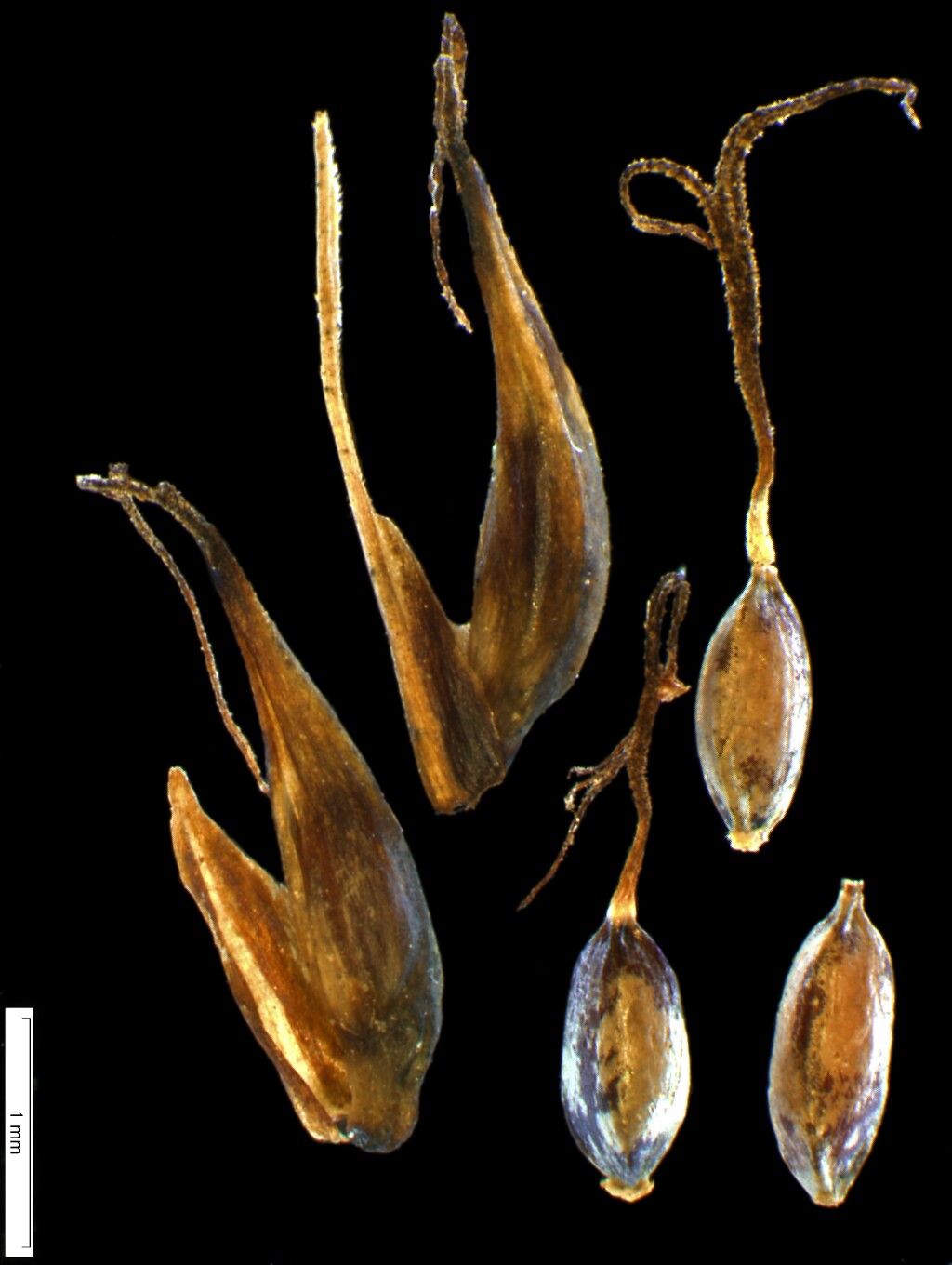Carex archeri
Boott Archer's SedgeRhizome long; shoots ± loosely tufted. Culms erect, slender, terete, smooth, 3–25 cm long, c. 0.5 mm diam. Leaves usually shorter than culms, 0.3–0.5 mm wide; sheath dark yellow-brown; ligule truncate to rounded. Inflorescence erect, 0.5–0.7 cm long, with 1 few-flowered spike; lowest involucral bract exceeding inflorescence. Spike short, with very short portion of male flowers above the few (3–6) female flowers; glumes obtuse to acute, red-brown with narrow hyaline margins; female glumes 2.5–4(–5) mm long; utricles stipitate, 3–5 mm long, c. 1 mm diam., ellipsoid to ovoid, ± falcate, nerveless or faintly nerved, glabrous or hispidulous on upper margins, red-brown to dark red-brown; beak 1–2.5 mm long, with apex notched; style 3-fid. Nut narrow-ellipsoid, trigonous, pale yellow-brown. Flowers summer.
GipP, HSF, HNF, VAlp. Also NSW, Tas. Scattered and apparently rare in higher alpine areas (e.g. Mts Hotham, Feathertop and Bogong) with isolated occurrences on the Snowy Range and near Cravensville. Very seldom collected since 1950.
Inflorescence a single spike as in C. capillacea and C. cephalotes. It differs from both species in having the lowest involucral bract exceeding the inflorescence. From C. capillacea it differs further in the male part of the spike being shorter than the female part, and from C. cephalotes in having shorter spikes, and fewer female flowers.
Wilson, K.L. (1994). Cyperaceae. In: Walsh, N.G.; Entwisle, T.J., Flora of Victoria Vol. 2, Ferns and Allied Plants, Conifers and Monocotyledons, pp. 238–356. Inkata Press, Melbourne.
 Spinning
Spinning
